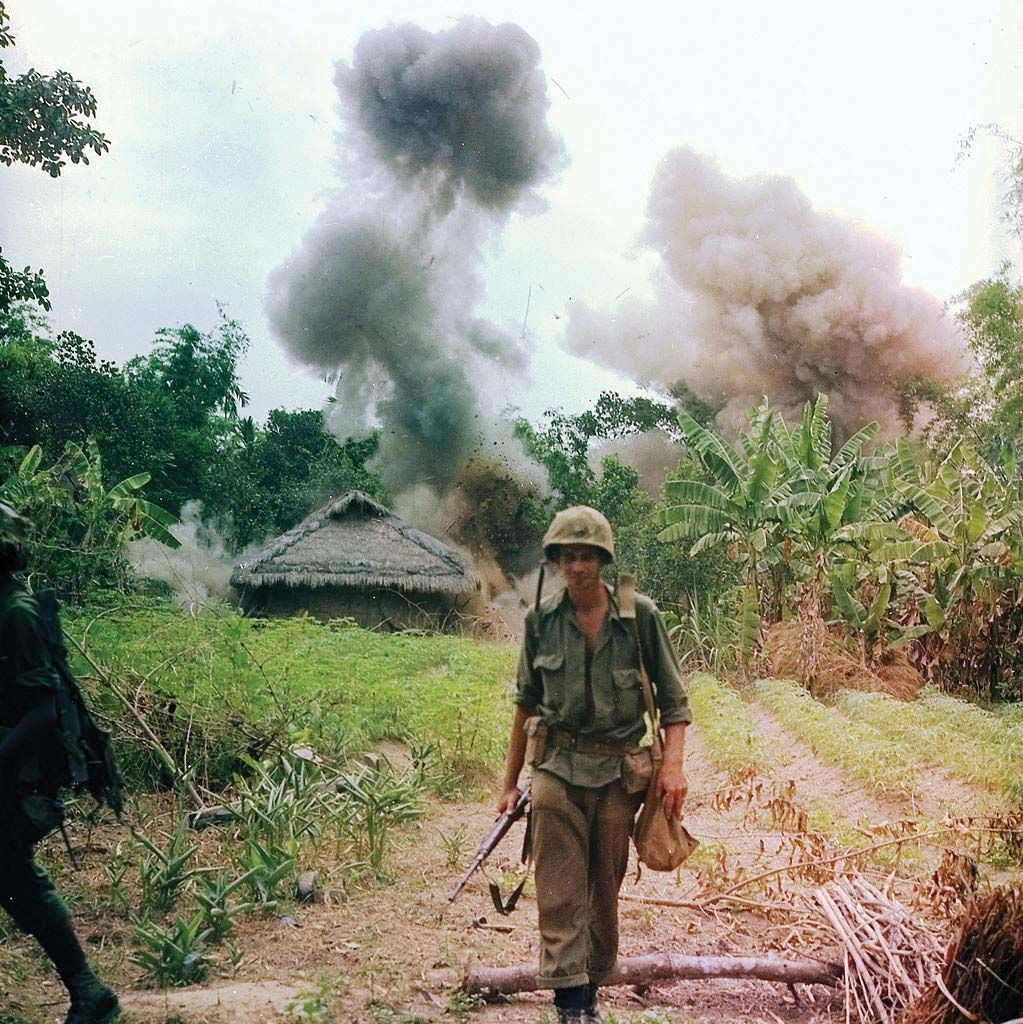The Vietnam War, a defining event of the 20th century, is often remembered for its length and complexity. But How Long Was The Vietnam War exactly? Understanding the duration of this conflict requires examining different phases and perspectives, as its timeline stretches across decades, involving multiple nations and evolving objectives.
To accurately answer “how long was the Vietnam War?”, we need to consider various starting and ending points, depending on the scope of involvement and the actors considered. While the conflict is broadly recognized as occurring from the 1950s to 1975, pinpointing a precise duration necessitates a deeper look at the key periods and milestones.
Defining the Vietnam War Timeline: From French Indochina to the Fall of Saigon
The roots of the Vietnam War can be traced back to the First Indochina War, which concluded in 1954 with the Geneva Accords. These accords provisionally divided Vietnam at the 17th parallel, creating North Vietnam (communist) and South Vietnam (non-communist), with reunification elections planned. However, these elections never materialized, and the division became increasingly solidified, setting the stage for further conflict. Therefore, considering the seeds of the Vietnam War were sown in the aftermath of French colonialism, some historians might argue the conflict’s origins predate 1954.
For the United States, significant involvement began in the early 1960s, escalating dramatically in 1965 with the deployment of large-scale combat units. If we mark the start of major U.S. combat operations in 1965 and consider the fall of Saigon in April 1975 as the end, the Vietnam War, from a primary U.S. perspective, lasted approximately ten years.
However, if we consider the period of U.S. advisory and support roles, which started in the 1950s and intensified in the early 1960s, the American involvement extends even further. From the arrival of the first military advisors in Vietnam in the mid-1950s to the final withdrawal of troops in 1973 and the eventual fall of Saigon in 1975, the period spans roughly two decades.
Furthermore, for the Vietnamese people themselves, the struggle against foreign intervention and for national unification spanned an even longer period. From the end of French colonial rule in 1954 to the reunification of Vietnam under communist rule in 1975, the Vietnamese experienced over two decades of continuous warfare and upheaval.
Key Phases of the Protracted Vietnam Conflict
To better understand the duration, it’s helpful to break down the Vietnam War into key phases:
-
Early Stages (1950s – Early 1960s): Following the Geneva Accords, Vietnam was divided. The U.S. provided increasing support to South Vietnam, fearing the spread of communism, while North Vietnam, backed by the Soviet Union and China, aimed for reunification under communist ideology. This period saw the rise of the Viet Cong insurgency in South Vietnam.
-
Escalation and Peak U.S. Involvement (1965 – 1969): The Gulf of Tonkin incident in 1964 provided the pretext for massive U.S. military escalation. Ground troops were deployed in large numbers, reaching a peak of over 500,000 by 1969. This phase was characterized by intense combat, bombing campaigns, and heavy casualties on all sides.
-
Vietnamization and U.S. Withdrawal (1969 – 1973): Facing mounting domestic opposition and seeking to reduce American casualties, the Nixon administration initiated “Vietnamization,” a policy aimed at gradually withdrawing U.S. troops and transferring combat responsibilities to the South Vietnamese army (ARVN). Peace negotiations began in Paris.
-
Final Phase and Fall of Saigon (1973 – 1975): The Paris Peace Accords were signed in 1973, leading to the withdrawal of the remaining U.S. combat forces. However, the ceasefire was fragile. In 1975, North Vietnam launched a final offensive, and with limited U.S. support, South Vietnam collapsed. Saigon fell to communist forces in April 1975, marking the end of the war and the reunification of Vietnam.
The Lasting Impact of a Long and Divisive War
Regardless of the precise starting and ending dates chosen, it is undeniable that the Vietnam War was a prolonged conflict with profound and lasting consequences. The extended duration of the war deeply impacted all involved nations.
For Vietnam, the war resulted in immense human suffering, widespread destruction, and long-term environmental damage from bombs and defoliants. Estimates of Vietnamese deaths range into the millions, including both civilians and combatants from both sides.
For the United States, the Vietnam War was the longest war in its history until the Afghanistan War. It resulted in over 58,000 American deaths, hundreds of thousands wounded, and deep social and political divisions within the country. The war also significantly impacted U.S. foreign policy and military strategy for decades to come.
In conclusion, how long was the Vietnam War depends on the perspective taken. From the start of major US combat involvement, it lasted approximately ten years (1965-1975). Considering broader US involvement and Vietnamese perspectives, the conflict spanned roughly two decades (mid-1950s to 1975). Regardless of the specific timeframe, the Vietnam War was a protracted and devastating conflict that left an indelible mark on global history.

